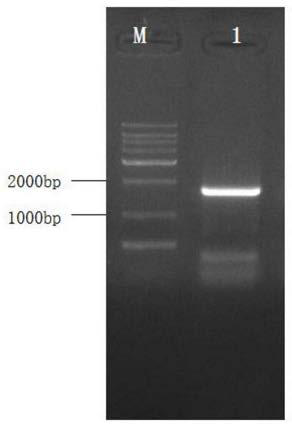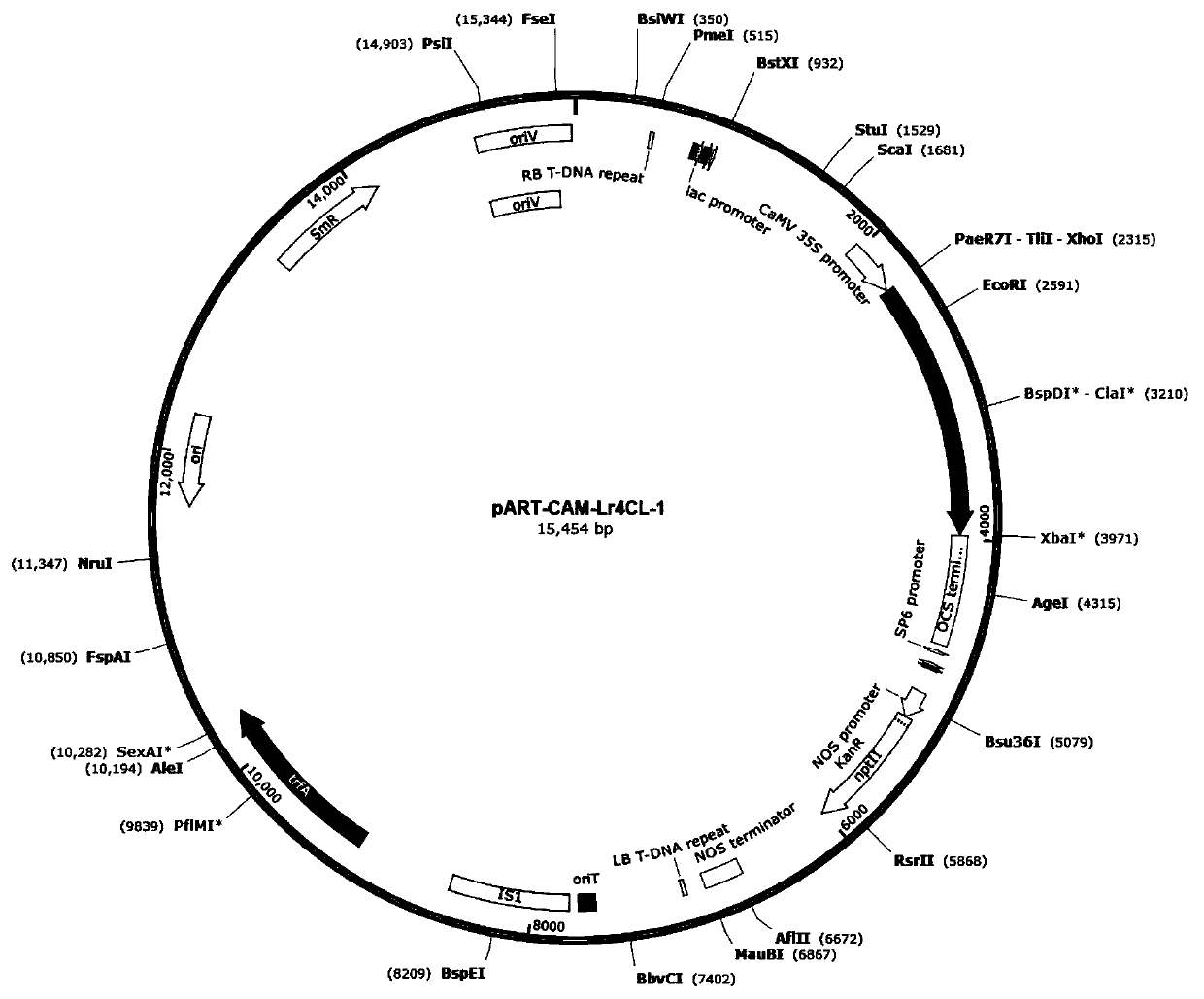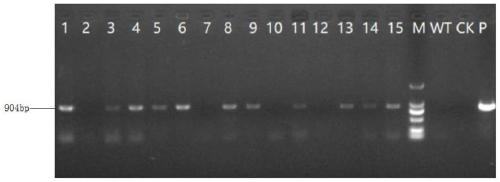A Minjiang lily lr4cl-1 gene and its application
A technology of lr4cl-1 and gene is applied to the Lr4CL-1 gene of Minjiang lily and its application field, which can solve the problems such as the blank of biological function and action mechanism, achieve the improvement of plant fungal disease resistance, change leaf traits, and simple operation. Effect
- Summary
- Abstract
- Description
- Claims
- Application Information
AI Technical Summary
Problems solved by technology
Method used
Image
Examples
Embodiment 1
[0027] Example 1 Lilium Minjiang Lr4CL-1 full-length gene cloning and sequence analysis
[0028] The genome sequencing of Minjiang lily (Lilium regale Wilson) has not yet been completed. The research group used Botrytis cinerea to infect Minjiang lily (sprouting stage) in the early stage, and used the leaves after 24 hours of treatment as materials, using TRIzol TM Plus RNA Purification Kit (12183555, Invitrogen TM ), total RNA was extracted according to the instructions, and DNase I (18047019, Invitrogen TM ) to remove residual traces of DNA, and use a spectrophotometer to measure the concentration of RNA for later use.
[0029] About 2.0 μg of total RNA from leaves of Lilium Minjiang was taken, and the first-strand cDNA was synthesized according to the instructions of PrimeScript II first-strand cDNA synthesis kit (6210A, Takara).
[0030] PCR amplification system: 2xfast pfu master Max 10ul, forward primer (Lr4CL-1-F, 10μM) 1μL, reverse primer (Lr4CL-1-R, 10μM) 1μL, templ...
Embodiment 2
[0038] The construction of embodiment 2 plant overexpression vectors
[0039] (1) Construction of pART-CAM::Lr4CL-1 overexpression vector
[0040] According to the full-length gene sequence of Lilium Minjiang Lr4CL-1 (SEQ ID NO.1), primers Lr4CL-1-inf-F and Lr4CL-1-inf-R were designed, and the seamless cloning (In-fusion) vector linker sequence was introduced into the primers . Using the TA-ligated positive clone plasmid in Example 1 as a template, Lr4CL-1-inf-F and Lr4CL-1-inf-R were used as primers to perform specific amplification of the gene Lr4CL-1.
[0041] The primer sequences are as follows:
[0042] Lr4CL-1-inf-F:5'- GGAGAGGACACGCTCGAG ATGGGCTCCATCTCTCCG-3'
[0043] Lr4CL-1-inf-R:5'- TTAAAGCAGGACTCTAGA TCACTGCTGTCGACCGTT-3'
[0044] Among them, the underline is the linker sequence of the In-fusion cloning vector.
[0045] PCR amplification system: 2xfast pfu master Max 10ul, forward primer (Lr4CL-1-F, 10μM) 1μL, reverse primer (Lr4CL-1-R, 10μM) 1μL, template ...
Embodiment 3
[0053] Example 3 Agrobacterium-mediated transformation of tobacco and screening of transgenic positive lines
[0054] Rinse the seeds of tobacco (Nicotiana tabacum cv.Petit Havana SR1) with sterile water, sterilize with 75% ethanol for 1 min, sterilize with sodium hypochlorite solution (2% available chlorine) for 15 min, rinse with sterile water 3-5 times, and absorb them with sterile filter paper. Moisture on the surface of dry seeds, inoculated on LS medium (PH5.8).
[0055] Glycerol bacteria were streaked on YEB solid medium (50 μg / mL streptomycin + 20 μg / mL rifampicin), and after two days of culture at 28 ° C, single clones were picked and inoculated into 5 ml of YEB liquid medium (50 μg / mL streptomycin). Mycin+20μg / mL rifampicin), 28°C, 220rpm constant temperature shaking culture overnight to OD 600 At about 0.6, centrifuge at 5000rpm for 10min to collect the bacteria, and resuspend the collected bacteria to OD with MS liquid medium 600 = 0.4.
[0056] After 1 to 2 mon...
PUM
| Property | Measurement | Unit |
|---|---|---|
| molecular weight | aaaaa | aaaaa |
Abstract
Description
Claims
Application Information
 Login to View More
Login to View More - R&D
- Intellectual Property
- Life Sciences
- Materials
- Tech Scout
- Unparalleled Data Quality
- Higher Quality Content
- 60% Fewer Hallucinations
Browse by: Latest US Patents, China's latest patents, Technical Efficacy Thesaurus, Application Domain, Technology Topic, Popular Technical Reports.
© 2025 PatSnap. All rights reserved.Legal|Privacy policy|Modern Slavery Act Transparency Statement|Sitemap|About US| Contact US: help@patsnap.com



